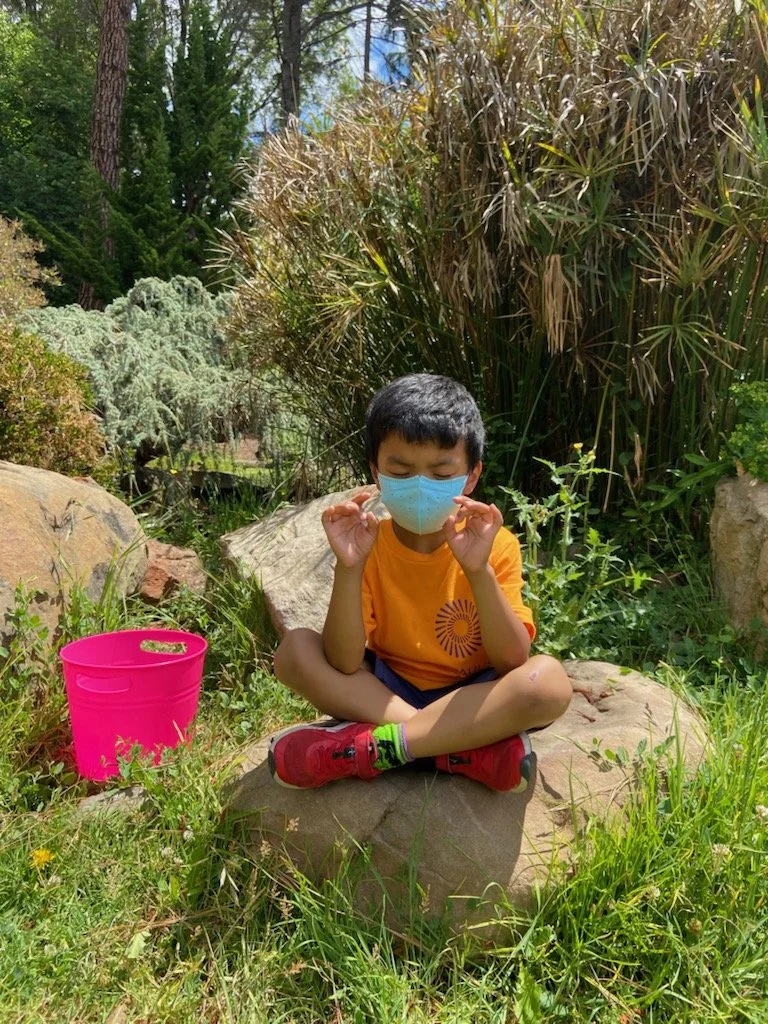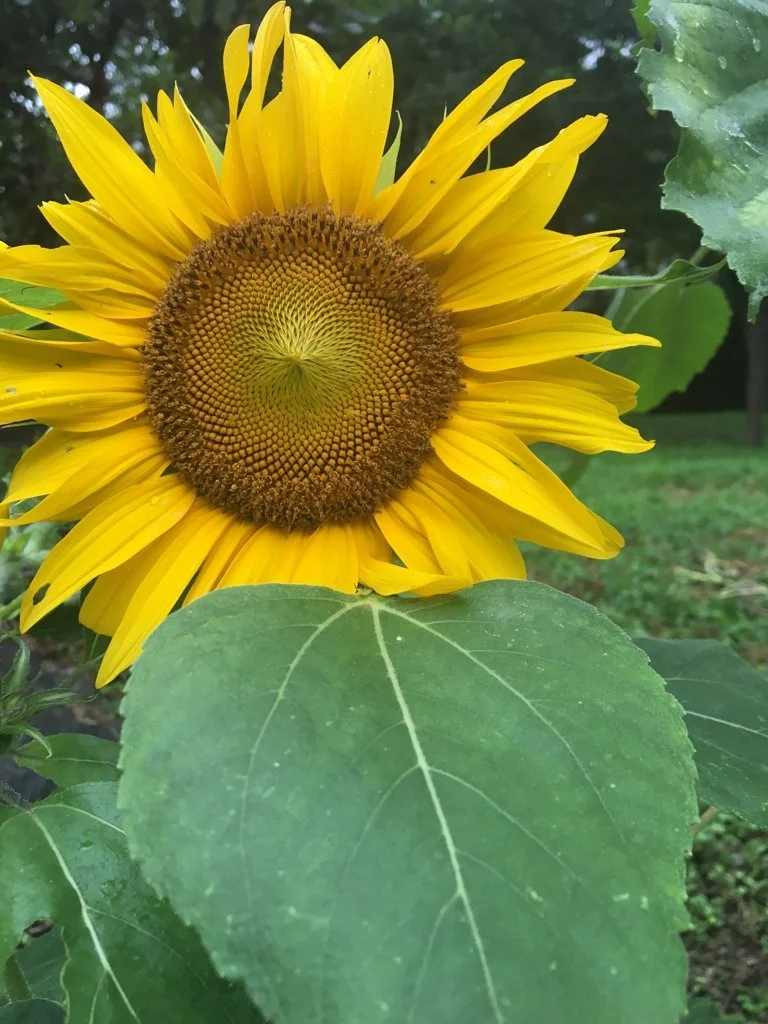Mindful Minutes
Can a minute really make a difference?
mind + ful + ness → mindfulness
Mindfulness is the ability to bring your attention to the present moment.
While that seems simple, this is easier said than done! Especially as teachers, our attention is pulled in many directions at once—we become masters of juggling, plate spinning, and all manner of attentional acrobatics. But attending to many things at once (a.k.a. multitasking) is actually not the way our brains work. We can only attend to one thing at a time; our brains are just so good at jumping from one thing to the next, it seems like we’re dividing our attention. Over time, this mental gymnastics can take a toll, leaving us feeling agitated, stressed and depleted.
Research reports that building in short mindfulness experiences can lower levels of stress and anxiety for educators (Benn et al., 2012; Flook et al., 2013), increase resilience (Klingbeil & Renshaw, 2018), and help build emotional-regulation skills, enhance attention and memory, and improve mood (Basso et al., 2019).
Over the past 3 years, our team of teaching fellows have incorporated ‘Mindful Minutes’ into our weekly community meetings, a concept inspired and adapted from Willie L. Brown Jr. Middle School’s team meetings. Each week, members of our teaching team take turns planning and leading a Mindful Minute, and it’s been amazing to see what’s grown out of this project.
As you can imagine, after 3 years, we’ve built quite an impressive collection of these short, yet impactful practices. Our team put together this list of free, easily accessible Mindful Minutes which we return to again and again, for use with our students and ourselves. We hope this list provides a good starting place for you to build your own practice!
Note: You’ll notice a few of these practices are longer than 1 minute. We always adapt them to fit into 1 minute, but do what’s right for you and your learning community!
Mindful Breathing
Square Breathing by UAB
Finger tapping
Using your thumb, tap each finger to mark each inhale and exhale
Mini Meditation by Headspace
4x4 breathing by Jigsaw YMH
Finger tracing
Using your thumb, trace up and down each finger on the same hand, coordinating with your breath as you inhale and exhale
Box Breathing in the Forest by Conscious Works
Garden Relaxation by Bari Koral
Mindful Journaling
Gratitude Journaling
Write down what you’re grateful for in this moment
Write the name of someone you admire.
Why do they inspire you?
The Small Things
Make a list of all the “little things” that make you smile
Recognizing Strengths
What are some of your strengths, skills, and talents?
Mindful Movement
Brain Tapping by Brain Power Wellness
Balloon Man by Institute of Positive Education
Crazy 8’s
Stand up tall with both feet grounded and lots of space around you to move. Put your palms together and move your arms in a sideways figure 8 motion (like an infinity sign). Count to 10, then switch directions. Keep counting and switching for one minute.
Shoulder Stretches by 1 Minute Exercises
5 Postures adapted from Mindfulness Meditations for ADHD by Merriam Sarcia Saunders
Gaze: Soften your eyelids and let your gaze drop softly. Spend a few breaths noticing your gaze.
Shoulders: Keep your spine upright, being careful not to hunch, slouch, or raise your shoulders. Take a few mindful breaths.
Chin: Tuck your chin slightly. Breathe into your chin.
Jaw: Open and close your mouth, stretching your jaw muscles. Move your jaw slowly from side to side. Relax your jaw and take a deep breath.
Hands: Shake your hands vigorously, then let them rest on your lap or by your sides. Breathe into your hands.
Mindful Drawing
Mindfulness Breathing and Directed Doodling by Michigan Medicine
Draw a place where you feel calm
Find something small and draw it with as many details as you can
Mindful Doodling
Use markers, crayons, pens, or pencils to doodle across your paper. Notice what shapes begin to appear (or not)! Notice the feeling of the movement, and the pressure of your hand on the writing instrument.
Water Writing
Use water to draw across a surface like a stone, paper, or the ground. You can use a paintbrush or your finger. Watch as the water evaporates.
Tuning Into Emotions
Start at the left and go up, identifying energy levels. Then move to the right.
Start at the innermost circle of the wheel. Identify a feeling or color that resonates with you in the present moment. It’s okay to acknowledge mixed-emotions, but try to focus on just one. Move outward to pinpoint your emotion with more specificity.
Choose a color that corresponds to how you’re feeling in this moment. Once you identify the color, think about how bright, dark, light, or saturated your feeling is.
Mindful Noticing
Play the Listening Game
Close your eyes or soften your gaze. Notice what you hear around you for one minute.
Observing Jellyfish
Spend 1 minute watching the Monterey Bay Aquarium Jellyfish Cam
5-4-3-2-1
Silently in your head, identify 5 things you can see, 4 things you can hear, 3 things you can feel, 2 things you can smell, and 1 thing you can taste
Mindful Sipping
Grab a cup of water, tea, or other beverage. Take a slow sip. Think about how the liquid feels and tastes. Take a few slow, mindful sips.
Bird Watching
Spend 1 minute observing forest critters enjoying a Winter feast in this video by Movie Squirrels
Mindful Eyes by Beech Acres
Listen to rain or a thunder storm
Building a toolkit of easy-to-implement Mindful Minutes responds directly to a pressing need for teachers to have short, flexible activities that can be pulled out at a moment’s notice to respond to students’ social-emotional needs.
This is especially important when working with populations of students with learning differences who may arrive to their learning environments carrying experiences of learning-associated trauma or lower-level stress.
When working with students during intervention, educational therapy or tutoring sessions, specialists need tools at their disposal that can be leveraged to build opportunities for the development of emotional-regulation skills AND to respond to shifts in student attention, emotional experiences or when states of dysregulation surface. During such times, it’s important for teachers to offer students a path towards regulation, reflection and positive feedback.
Mindful minutes or “brain breaks” can support students in regaining focus without taking significant time away from instruction. In classroom contexts, these bite-sized practices allow teachers to attend to students’ social-emotional needs while balancing the need to move instruction forward in accordance with demanding daily schedules.
Love these Mindful Minutes?
Let us know how you’re using Mindful Minutes with your learning community!
Reach out on Facebook or Instagram or shoot us an email at team@wordsinthewild.org.
Be sure to bookmark this page—we’ll be adding new ideas for Mindful Minutes periodically!









